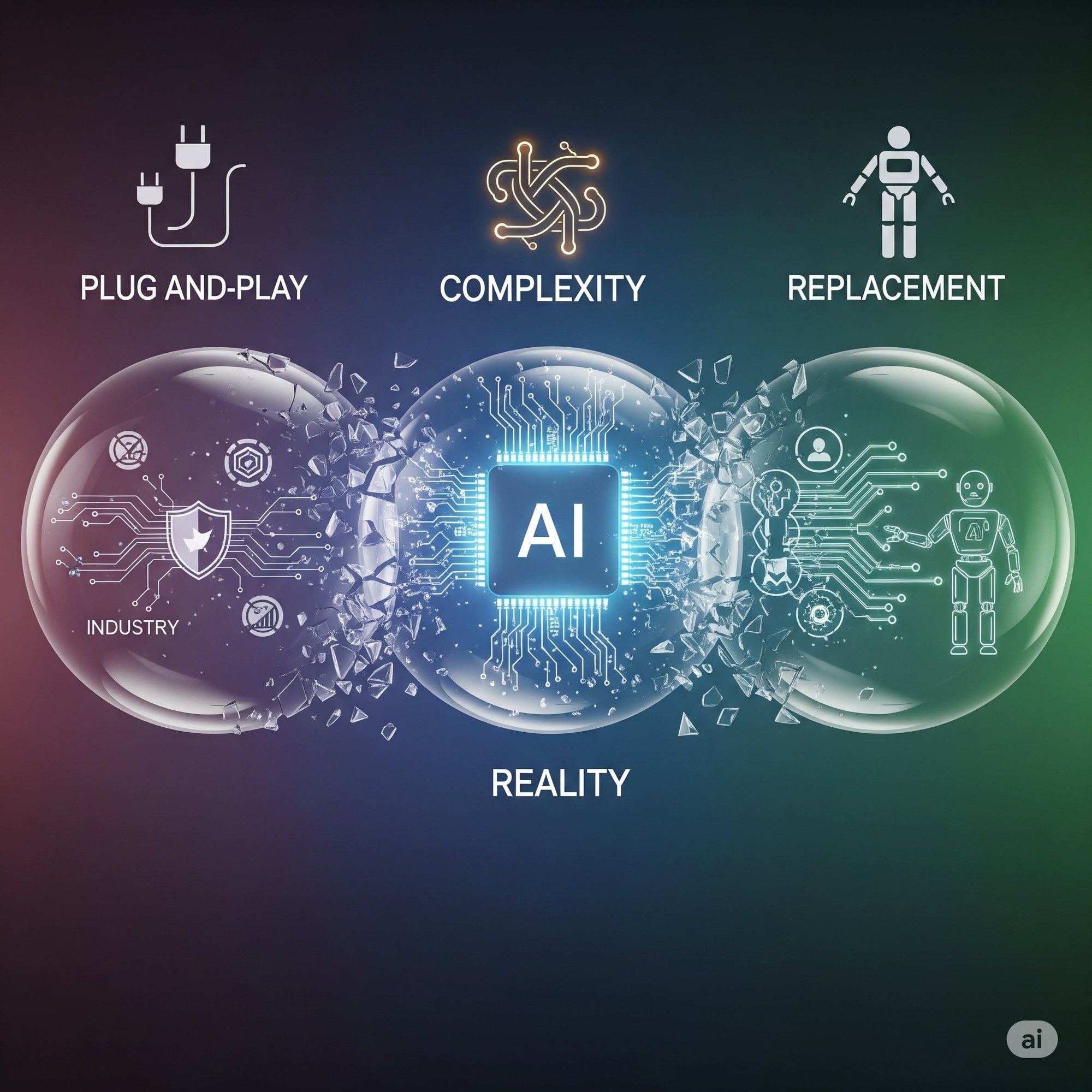What Are the Top Challenges in AI Implementation?
AI is full of promise—but implementation isn't plug-and-play. Learn the biggest hurdles businesses face, and how to overcome them effectively.
Solving AI Implementation Challenges
We’ve seen it time and again—teams with big AI ambitions getting stuck before results ever show up. The good news? These challenges aren’t random. They’re repeatable, predictable, and most importantly—solvable. From strategy to security, here’s what we’ve learned working with companies that turned AI from a concept into a competitive advantage.

Watch: Common AI Implementation Pitfalls
Explore what leading experts and companies have learned from failed AI rollouts—and how you can avoid the same mistakes.
Why Is AI So Hard to Implement?
Despite the hype, many organizations struggle to move from AI ideas to outcomes. Common issues include:
- Data Fragmentation: Scattered, inconsistent data prevents AI from generating useful insights.
- Integration Challenges: Off-the-shelf AI doesn’t play well with existing tech stacks or workflows.
- Lack of Explainability: Black-box models don’t meet internal audit or regulatory requirements.
- Overhyped Expectations: Leaders expect AGI, but real value lies in focused, narrow AI.
- Security and Compliance Risks: Especially in regulated industries like healthcare or finance.

Top AI Implementation Myths
- Myth: AI works out of the box like other software tools
Reality: AI needs aligned data, secure systems, and domain-specific logic - Myth: The more complex the AI, the better
Reality: Simpler, explainable models often outperform black-box systems - Myth: AI replaces teams
Reality: It augments teams—when designed around how they work
Solving AI Implementation Challenges
You don’t overcome AI hurdles with hype—you do it with strategic focus, secure integration, and real-world execution. Here’s how successful organizations move from theory to traction:
1. Align AI with a Specific Business Outcome
High-performing teams don’t ask “Where can we use AI?” They ask “What outcome do we want to achieve?” AI works best when it's tied to measurable goals like reducing processing time, increasing accuracy, or improving customer response times.
2. Build for Seamless Integration
One of the biggest reasons AI fails is poor system compatibility. Custom AI solutions are designed to work within your existing infrastructure—EHRs, legacy databases, CRMs—without disrupting day-to-day operations.
3. Prioritize Explainability and Trust
AI should make your team more confident—not confused. Models need to be transparent, auditable, and easy to explain to internal stakeholders, auditors, or regulators.
4. Secure the Foundation from Day One
Compliance isn't a final step—it's built in from the start. Especially in healthcare, finance, or logistics, your AI must meet HIPAA, SOC 2, and GDPR standards to scale safely and legally.
5. Related Work: Real AI, Real Results
42RobotsAI doesn't just experiment with agents—we implement custom AI solutions that drive measurable outcomes. Here are a few ways we've helped clients turn AI into impact:
- 90% Automation in SaaS Operations
We helped a B2B SaaS company slash processing time from months to days using a hybrid AI solution. - 80–90% Data Accuracy from Handwritten Faxes
For a medical SaaS provider, we transformed operations by extracting structured data from thousands of unstructured faxes.
See the full case studies →
Why Choose Us?
The 42robots AI Difference

Custom AI, Not Generic Models
Every solution is tailored to your business.
AI-Powered Efficiency
Reduce time spent on manual processes.
Seamless Integration
No need to overhaul your systems.
Proven Results
Success stories in finance, healthcare, and operations.
Checklist: Are You Ready for AI?
Before jumping into an AI project, it helps to know if your foundation is set. Use this quick checklist to gauge your team’s readiness:
✅ Do you have clean, accessible data—and clarity on who owns it?
✅ Are your existing systems (EHRs, CRMs, databases) ready for integration?
✅ Have you identified your security, compliance, and audit requirements?
✅ Is your team prepared to act on AI insights—not just receive them?
If you’re unsure about any of these, you’re not alone. Let’s talk about how to build an AI strategy that fits your reality.
Trusted by Healthcare Leaders
Join innovative teams using custom AI to streamline operations, reduce manual work, and deliver better patient outcomes—securely and at scale.





Facing Roadblocks with AI?
Let’s talk about building AI that fits—securely, efficiently, and with results.